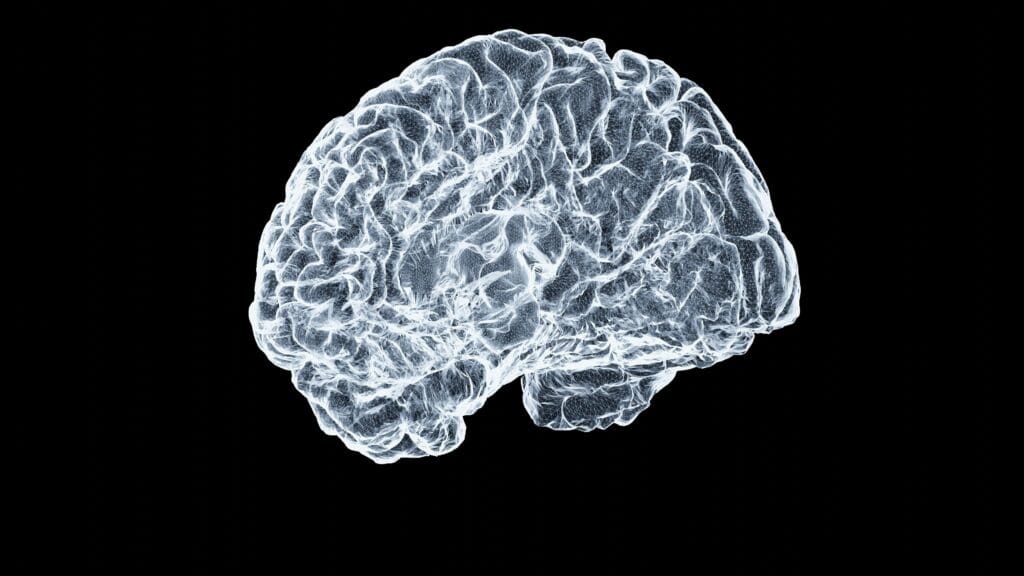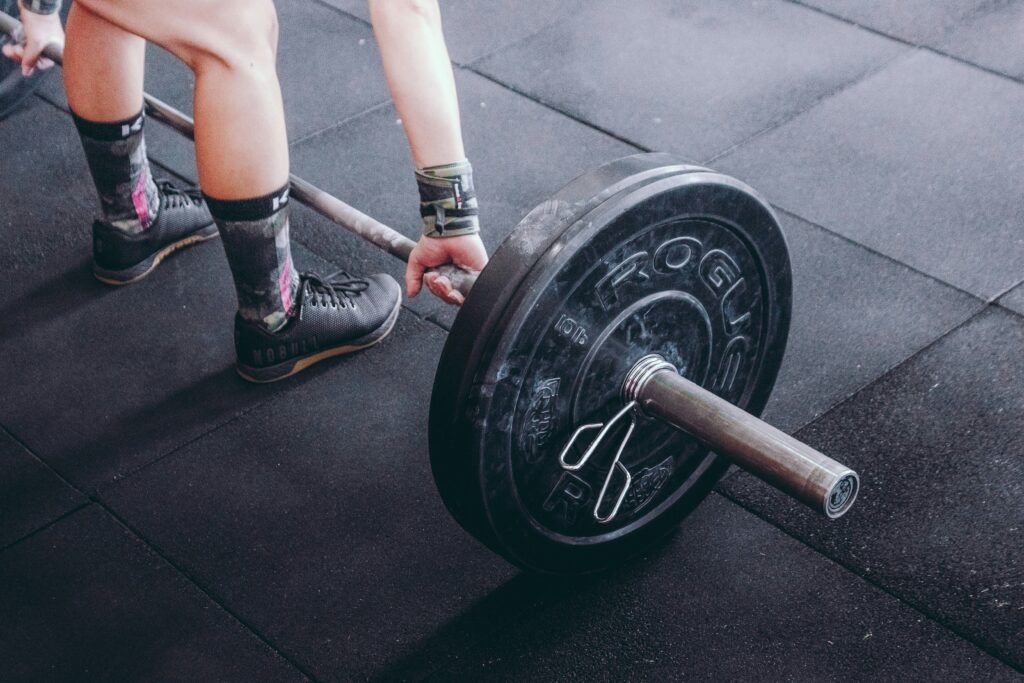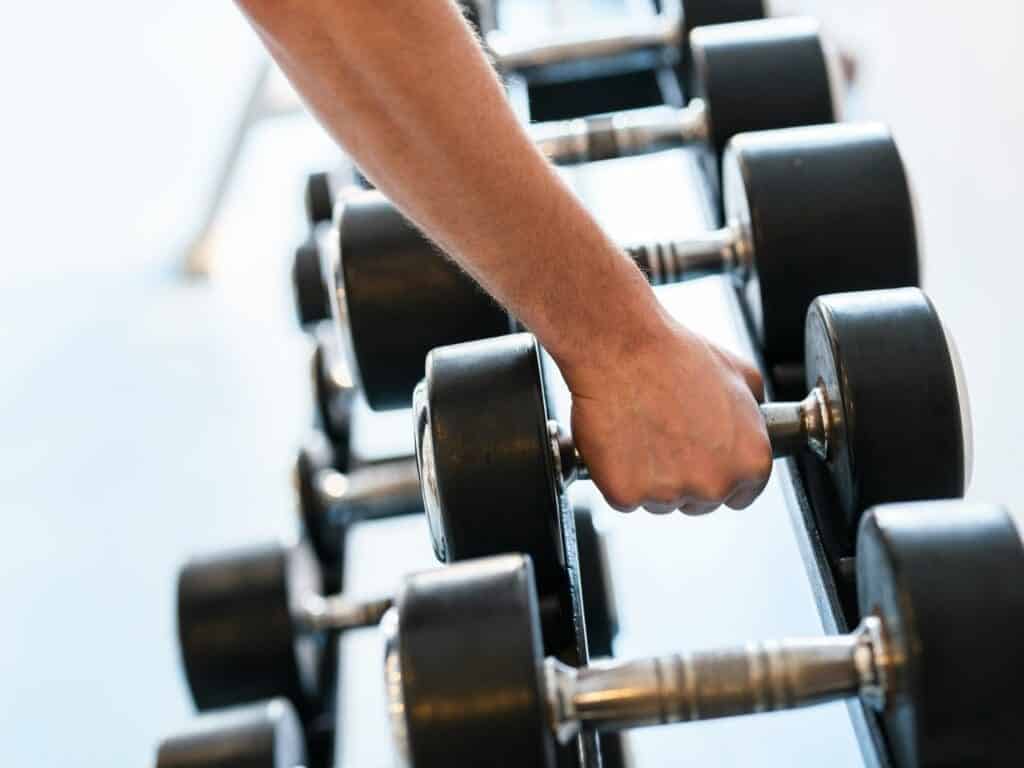Introduction to the Connection Between Fitness and Academic Success

In recent years, the correlation between physical fitness and academic performance has garnered considerable attention. A growing body of research suggests that engaging in regular physical exercise, particularly through structured lifting programs, can significantly enhance cognitive function, attention span, and overall academic success. Exercise has been shown to stimulate the release of various neurochemicals that promote the development of new neural connections, leading to improved learning capabilities. As such, integrating a focused lifting regimen into students’ daily routines may serve as a powerful tool for increasing their academic efficacy.
The benefits of physical exercise extend beyond mere physical health; they encompass mental wellness, emotional regulation, and stress management. Engaging in lifting not only improves muscle strength and endurance but also provides individuals with a sense of accomplishment and boosts self-esteem. These psychological gains can enhance motivation and concentration, which are vital components of academic success. Physical fitness encourages better sleep patterns, reduces anxiety, and fosters resilience—qualities that positively impact students’ ability to learn and retain information.
Moreover, a well-structured lifting program can help students develop discipline and time management skills. Balancing a lifting routine with academic responsibilities teaches the importance of prioritizing tasks and making effective use of time. Additionally, the social aspect of participating in lifting, whether through gym partnerships or group classes, can foster teamwork and camaraderie, further enhancing the overall educational experience.
As students seek to improve their academic performance, they should consider the diverse benefits that an organized lifting program can provide. Not only does physical fitness contribute to enhanced cognitive function, but it also supports the formation of a resilient mindset, all of which are integral to achieving academic success.
Understanding the Basics of a Lifting Program

A lifting program is a structured regimen designed to improve physical strength and fitness, which can have beneficial effects on academic performance. The foundation of an effective lifting program comprises several key components: goal setting, exercise selection, and workout frequency. Establishing clear and attainable goals is crucial, as it provides direction and motivation. For instance, a student may aim to increase overall strength, enhance endurance, or improve body composition. Specificity in goal setting ensures that the program aligns with individual aspirations and academic demands.
Exercise selection is another critical aspect of a lifting program. Exercises can be categorized into two main types: compound and isolation movements. Compound exercises, such as squats, deadlifts, and bench presses, engage multiple muscle groups simultaneously, promoting overall strength and functional fitness. Isolation exercises, in contrast, target specific muscles, helping to maximize muscle definition and address imbalances. A well-rounded lifting program will incorporate both types of exercises to ensure comprehensive development and conditioning.
The frequency of workouts is also vital for effective results. Most lifting programs recommend training sessions ranging from two to six times per week, depending on individual schedules, recovery needs, and performance goals. For students, balancing a lifting program with academic responsibilities can be challenging, so it is essential to create a realistic plan that prioritizes both physical and intellectual growth. It is advisable to allow adequate rest days, facilitating muscle recovery and preventing overtraining.
In summary, understanding the basics of a lifting program involves recognizing the importance of goal setting, exercise selection, and workout frequency. Tailoring these elements to meet personal academic and physical requirements can lead to enhanced well-being and improved academic performance.
Setting Personal Goals for Your Lifting Program

Establishing personal goals is a fundamental component of any lifting program, especially for students aiming to enhance their academic performance. The SMART criteria—Specific, Measurable, Achievable, Relevant, and Time-bound—provide a structured approach to goal-setting that ensures clarity and motivation. By utilizing the SMART framework, individuals can create targets that are not only meaningful but also aligned with their academic ambitions.
To begin, goals should be Specific. Instead of a vague aspiration like “get stronger,” a more specific goal could be “increase my bench press by 20 pounds.” This specificity creates a clear direction, allowing individuals to focus their efforts on achieving concrete results. Next, goals must be Measurable to track progress effectively. By documenting the initial weight lifted or the number of repetitions, students can gauge their improvement over time, reinforcing their commitment to both their lifting program and their academic studies.
Furthermore, it is essential to ensure that the goals are Achievable. Setting overly ambitious targets can lead to frustration and burnout. Therefore, it is advisable to reflect on one’s current fitness level and then set realistic milestones that encourage persistence. The goals should also be Relevant; they must resonate with one’s overall objectives. For example, if a student finds that regular lifting boosts their concentration during study sessions, it underscores the importance of integrating fitness into their academic lifestyle.
Finally, goals should be Time-bound, establishing a timeline for completion. For instance, aiming to reach a specific lifting weight within three months not only cultivates urgency but also instills discipline—qualities which are equally fundamental for academic success. Through setting SMART goals in their lifting programs, students can establish a physical foundation that supports and enhances their educational pursuits, ultimately leading to improved focus and study habits.
Creating a Balanced Lifting Schedule

When developing a lifting schedule that complements academic pursuits, it is paramount to strike a balance that allows for both effective workouts and adequate study time. The framework of such a schedule should reflect a clear understanding of individual commitments, energy levels, and athletic goals. A well-structured lifting program offers not only physical benefits but can also enhance cognitive function, ultimately aiding academic performance.
Aiming for a frequency of three to four lifting sessions per week is generally advisable. This allows for sufficient recovery while promoting muscle growth and strength. For example, a Monday-Wednesday-Friday schedule might include full-body workouts, while a Tuesday-Thursday plan could focus on upper and lower body split routines. Each session should last between 45 to 60 minutes, ensuring that intensity remains high without leading to burnout. Keeping workouts efficient is critical when juggling multiple responsibilities, so prioritizing compound movements like squats, deadlifts, and bench presses can offer maximum benefit in a shorter time frame.
Students must pay attention to the intensity of their workouts, adjusting weights as necessary to maintain proper form and prevent injury. Incorporating progressive overload gradually will ensure consistent gains without overwhelming time constraints. Breaks between lifting sessions should be optimized, perhaps by scheduling lighter activities such as stretching or mobility work. These can facilitate recovery and provide mental relief during intensive study periods.
Moreover, flexibility is essential when planning a lifting schedule. Life can be unpredictable, and students should be prepared to adjust their workouts based on examination periods or project deadlines. It’s vital to communicate openly with peers or coaches if adjustments are necessary, ensuring that academic responsibilities are manageable without neglecting the lifting program. By carefully planning the frequency, duration, and intensity of workouts, students can create a balanced lifting routine that supports both their fitness and academic endeavors.
Essential Lifting Techniques and Safety Tips

When embarking on a lifting program, understanding the fundamental lifting techniques is essential for both maximizing performance and minimizing the risk of injury. Proper form is crucial; it not only enhances the effectiveness of each lift but also ensures longevity in any fitness regime. A solid grasp of lifting mechanics can lead to better results in combined efforts toward academic performance enhancement.
Warm-up routines before lifting are indispensable. Engaging in dynamic stretches that target the muscle groups to be used can prepare the body effectively. For instance, leg swings, arm circles, and torso twists increase blood flow and flexibility, reducing the likelihood of strains. Moreover, incorporating mobility exercises like hip openers can enhance your range of motion, which is vital when handling heavier weights. A minimum of 5 to 10 minutes of warming up is recommended to kickstart the body’s readiness.
Once the lifting session is complete, taking the time to cool down with static stretches is equally important. This practice aids in recovery by promoting flexibility and reducing muscle soreness. Focusing on the major muscle groups engaged during the workout will facilitate better overall muscle health.
As weightlifting progresses, gradually increasing the load is essential for continuous improvement. However, this must be done with prudence. The general guideline is to increase weights by no more than 5-10% at a time, allowing the body to adjust without the risk of injury. Listening to your body is paramount; if you experience pain beyond typical muscle fatigue, reevaluating your approach is recommended.
Incorporating these essential lifting techniques along with diligent safety practices will not only foster a smarter lifting strategy but also contribute positively to academic performance through improved mental readiness and focus.
Nutrition and Recovery: Key Components of a Lifting Program

In the context of a lifting program aimed at enhancing academic performance, nutrition and recovery play pivotal roles. A balanced diet is essential not only for optimal physical performance but also for cognitive function, both of which are critical for students juggling intense study schedules and weight lifting. Consuming a variety of nutrient-dense foods, including fruits, vegetables, lean proteins, whole grains, and healthy fats, helps provide the necessary energy required for workouts and study sessions. This comprehensive approach supports muscle recovery and cognitive health, ultimately facilitating better academic outcomes.
Hydration is another critical component that deserves attention. Often overlooked, staying well-hydrated is vital for maintaining stamina during lifting sessions and ensuring that the brain functions at its peak capacity. Students engaged in a lifting program should aim to drink adequate fluids throughout the day, with an emphasis on water intake before, during, and after exercise. This hydration strategy contributes not only to improved physical performance but also to enhanced concentration and memory retention.
Recovery strategies also hold significant importance in balancing lifting and academic responsibilities. This includes prioritizing sleep, which is crucial for muscle repair and cognitive processes. Students should aim for at least seven to nine hours of quality sleep each night, as this will ultimately support both their lifting goals and academic achievements. Additionally, planning meals becomes a strategic endeavor for students. By preparing meals in advance and including a variety of nutrients, students can better manage their time and ensure they consume foods that aid in recovery and fuel their brains for study.
In conclusion, the integration of sound nutritional practices and effective recovery methods within a lifting program is paramount. This synergy not only supports physical development but also enhances cognitive function, paving the way for improved academic performance.
Incorporating Cardio and Flexibility Training

While lifting weights forms a crucial aspect of a well-rounded fitness regimen, it is essential to also incorporate cardio and flexibility training to achieve a balanced approach to physical fitness. Cardio exercises, such as running, cycling, or swimming, are instrumental in enhancing cardiovascular endurance, which is vital for overall health and well-being. Engaging in regular cardiovascular activity elevates the heart rate, improves blood circulation, and increases lung capacity, which together contribute to enhanced energy levels. This newfound stamina can indirectly support academic performance by allowing students to engage more actively in their studies and extracurricular activities without feeling fatigued.
Moreover, cardio training has been shown to improve mood and reduce stress, which are significant factors affecting academic success. The endorphins released during aerobic activities create a natural mood boost, alleviating anxiety commonly associated with academic pressure. A positive mental state can lead to better focus and concentration, essential elements for effective studying and learning. Therefore, incorporating a variety of cardio exercises into a fitness routine not only bolsters physical health but also fosters an improved mental framework conducive to academic achievement.
Flexibility training, on the other hand, is often overlooked but is equally important in a complete fitness program. Activities such as yoga or dedicated stretching routines enhance muscular elasticity and joint mobility, which can help prevent injuries that may arise from more strenuous lifting exercises. Improved flexibility can also lead to a greater range of motion in daily activities and sports, supporting overall physical performance. In turn, this physical readiness translates to better academic focus and productivity, as students are less likely to face physical discomfort that could detract from their studies. By integrating cardio and flexibility training into a lifting program, individuals can build a comprehensive fitness strategy that supports not only their physical and mental health but also their academic endeavors.
Tracking Progress: Keeping a Journal

Integrating a robust lifting program into an academic framework necessitates disciplined tracking of both physical and mental growth. Keeping a journal serves as a vital component in this process, enabling individuals to record their workouts, emotional states, and academic achievements. By documenting these elements, students can glean insights into the intricate connections between physical fitness and academic performance.
A fitness journal can be structured to include multiple sections. For instance, one portion could focus exclusively on workout routines, detailing exercises performed, weights lifted, repetitions completed, and time spent on various activities. Tracking this information allows for an organized overview of physical progression and helps to set future goals. Noting how workouts make one feel both physically and mentally can provide an understanding of the emotional impact of physical fitness, thus reinforcing the student’s motivation.
In addition to workout logs, it is equally important to incorporate academic records into the journal. Documenting grades, homework completion rates, and feedback from examinations not only highlights academic progress but also creates a visual representation of the interplay between fitness and scholastic achievements. By comparing physical milestones with academic performance, students may observe trends that help them understand how regular exercise supports cognitive functions such as focus, retention, and overall mental clarity.
Furthermore, setting aside a few minutes each day to reflect on both workout experiences and academic outcomes can enhance self-awareness. This practice fosters a dimension of personal growth, as individuals can identify patterns and make informed adjustments to their lifting programs or study habits accordingly. Overall, the simple act of journaling can be an invaluable tool in tracking progress and enhancing both physical and academic performance.
Conclusion: Making Lifting a Lifestyle for Academic Excellence

In summary, integrating a lifting program into daily routines can significantly contribute to improved academic performance. Throughout this blog post, we have explored the multifaceted benefits of strength training, which include enhanced cognitive function, increased energy levels, and improved focus. These factors are essential for students who face the demanding challenges of rigorous academic schedules. By adopting a lifting regimen, students can not only bolster their physical well-being but also create a conducive environment for learning and personal growth.
Maintaining motivation and consistency is key when integrating lifting into a busy lifestyle. Establishing specific, attainable goals allows students to track their progress effectively. Setting short-term milestones can provide a sense of accomplishment and keep motivation levels high. Furthermore, crafting a well-structured lifting schedule that aligns with academic commitments is paramount. Consistency is crucial; thus, students should consider incorporating lifting sessions into their weekly timetable in a way that is sustainable and manageable.
To further entrench lifting as a lifestyle, students can seek social support. Partnering with peers or joining a club can foster a sense of community and accountability. Additionally, celebrating personal achievements, no matter how small, reinforces positive behaviors and encourages continued engagement in lifting activities. Acknowledging that strength training is not merely a phase, but a lasting commitment to overall well-being, positions lifting as an integral aspect of a student’s life.
Ultimately, embracing lifting as part of an academic journey encapsulates a holistic approach to success. By recognizing the interplay between physical strength and academic excellence, students can cultivate a balanced lifestyle that promotes both their health and educational pursuits. Making lifting a lifestyle choice may very well be the key to achieving unprecedented heights in both academics and personal development.


Pingback: Weight Loss Tips: Empower Your Journey to Success
Pingback: Exercise Academic Performance: Boost Learning Success
Pingback: Fitness Attractiveness: Decadent Training Tips